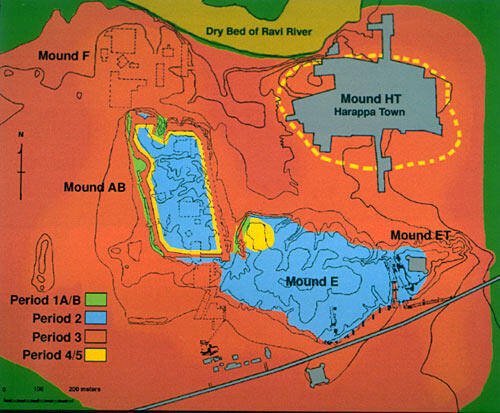Above: Map of Harappa excavation sites. Indus Chronology table
In addition to the overall objective of obtaining new information on the cultural and structural development of Harappa, other specific questions investigated include the development of civic organization and control, occupational specialization, and social stratification. Harappa has the distinction of being the site where the initial discovery of the Indus Civilization was made. The potential importance of the site for extended research was dimmed by two factors first, the devastation imposed on the architectural remains by nineteenth century brick robbers and, second, the more spectacular results of the excavations being conducted at Mohenjo Daro. But Harappa's fortunes improved in 1937 with the discovery of the first known Harappan period cemetery by K.N. Shastri. Subsequently, R.E.M. Wheeler directed excavations int he cemetery area and along the western edge of the so-called citadel, Mound AB. Then, in 1966, Dr. Mhd. Rafique Mughal of the Department of Archaeology, conducted further excavations in the Harappan cemetery R37.

